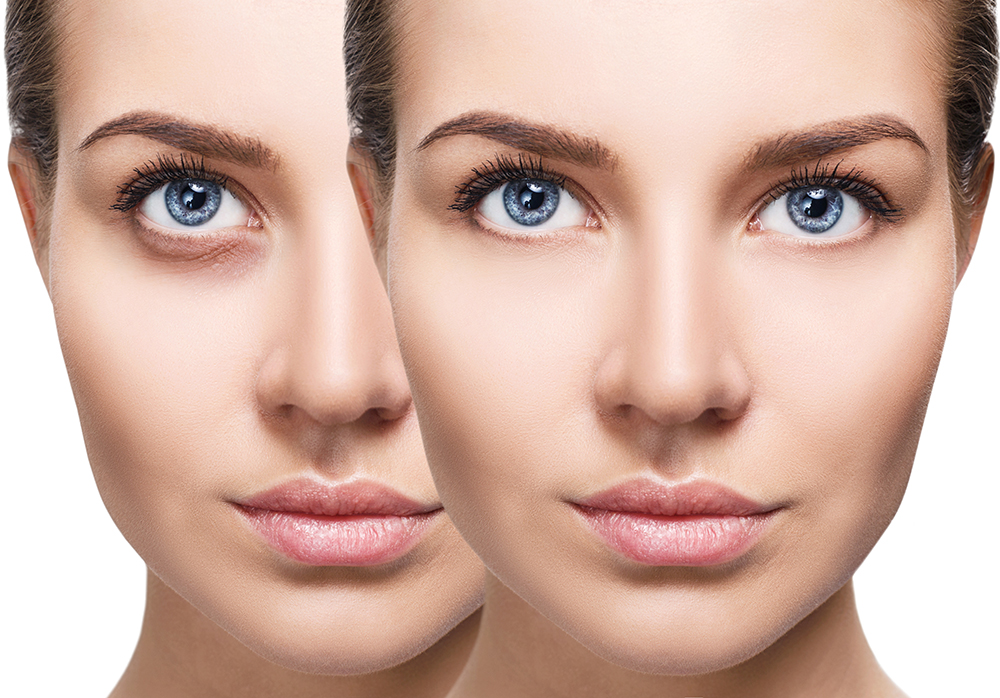The delicate skin around the eye is one of the first areas to show signs of aging and tiredness. Eye fillers are used to plump out fine lines and brighten up dark circles under the eyes.
What are Eye Fillers?
Eye fillers are injections used to lighten the tear trough and under-eye area. The injections can help reduce dark shadows to give the appearance of being well-rested. Eye fillers are temporary and will reabsorb into the body over time.
Several substances can be used as filler; however, none are currently FDA approved. Some commonly used eye fillers include:
Hyaluronic Acid
Hyaluronic acid fillers are the most common type of eye filler. The substance is popular for its ability to retain water and add volume to the skin. Most practitioners prefer hyaluronic acid to other fillers because it is easy to spread out once injected.
Hyaluronic acid eye fillers are made from a synthetic gel similar to the body’s natural hyaluronic acid. Popular brand name fillers include Restylane, Belotero, and Juvederm.
Hyaluronic acid is known to promote collagen production and does not clump easily, but the results are short-term—hyaluronic acid fillers only last for nine months to a year.
Poly-L-lactic Acid
Poly-L-lactic acid is injected during linear threading, which involves creating a tunnel of filler under the eye by slowly withdrawing the needle while injecting the filler.
Poly-L-lactic acid boosts collagen production, and results can last up to 2 years. However, Poly-L-lactic acid may cause lumps under the skin due to its thicker consistency.
The substance is available under the brand name Sculptra Aesthetic.
Calcium Hydroxylapatite
Calcium hydroxylapatite, available under the brand name Radiesse, is made up of phosphate and calcium. The chemical compound helps add volume to the skin by stimulating the production of collagen and connective tissue.
Unlike hyaluronic acid, calcium hydroxylapatite is white and is thick. Some practitioners believe there is a higher risk of over-whitening the under eyes when using calcium hydroxylapatite. The substance’s thickness also increases the risk of nodules forming.
Results from calcium hydroxylapatite fillers can last for 12 to 18 months.
Fat Transfer
Fat transfers often occur in patients with particularly thin or deep tear troughs. During the procedure, fat is taken from the patient’s abdomen, thigs, buttocks, or hips and injected in the undereye area, strengthening tear troughs.
Many people opt for fat transfer eye fillers because they can deliver longer-lasting results. Fat transfer fillers can last for up to 3 years. However, recovery time is lengthier as the procedure involves liposuction.
Fat transfer is not recommended for people whose bodies easily reabsorb fat such as athletes and smokers.
Cost
Since eye fillers are cosmetic, they are not included in any insurance plans. Eye fillers typically cost between $600 and $1,600 per syringe. It is not uncommon for the full procedure to cost upwards of $3,000.
Procedure
Before you receive fillers, you will have a pre-treatment consultation with your doctor to discuss which option is best for you.
Filler procedures vary depending on the substance used but generally follow a similar pattern. To begin, your doctor will mark out where the injection will occur and then sterilize the area. They will then apply a numbing agent to the area and allow it to sink into the skin for a few minutes.
Once the numbing agent takes effect, your doctor will begin the injection. The fillers can be injected directly through a small needle or with a blunt-edged cannula inserted where the needle made a hole.
After the injection, the doctor will smooth out the filler to create a natural appearance.
The procedure generally lasts 15 to 20 minutes, during which patients may feel slight discomfort and pressure as the filler is injected.
Recovery
Recovery time for eye fillers is minimal. Patients may experience swelling, bruising, redness, and tenderness in the area, but symptoms should subside within a few weeks. Applying an ice pack to the injection site can help relieve discomfort.
Your doctor will likely want to schedule a follow-up appointment a few days later to ensure proper healing and determine whether further injections are necessary. Some patients may need additional injections for up to a few weeks to achieve the desired effect.
Risks and Side Effects
Eye fillers are low risk, and side effects are minimal. To minimize risk, be sure to go with an experienced, certified professional and notify them of any allergies before the procedure.
Common side effects from eye fillers include:
- Redness
- Swelling and puffiness
- Small red dots at injection sites
- Bruising
In some cases, the area can appear blue and puffy; this is a common side effect of the filler being injected too close to the skin’s surface and is commonly referred to as the Tyndall effect. If symptoms persist or worsen, some fillers may need dissolving.
Serious side effects from poorly injected fillers include:
- Small bumps or nodules under the skin
- Uneven results
- Nerve paralysis
- Scarring
- Blindness
While serious side effects are rare, it’s important to remember that the skin around the eyes is sensitive, and no eye filler is FDA approved. Always talk to a medical professional before proceeding with any type of eye filler.

